![Image of Plazoom]()
By Plazoom
Last updated 06 October 2025
Blending history, storytelling, sensory experiences and dazzling visuals, Bonfire Night provides a perfect seasonal hook for engaging activities across EYFS, KS1 and KS2.
You don’t have to stick to the same old black-paper-and-glitter activities though. Below, we’ve gathered activity ideas and resources to help you bring the history and excitement of 5th November into your classroom, while improving children's literacy skills in the process.
What is Bonfire Night?
Bonfire Night, also known as Guy Fawkes Night or Fireworks Night, takes place on 5th November every year. It marks the failed Gunpowder Plot of 1605. This is when Guy Fawkes and his fellow conspirators attempted to blow up the Houses of Parliament.
Why do we celebrate Bonfire Night?
Bonfire Night is a reminder of a key moment in British history. King James I’s survival was celebrated at the time with bonfires, and this tradition has continued ever since.
In the classroom, it provides a way to explore history, storytelling, poetry and creative expression while linking to pupils’ own experiences of Fireworks Night.
EYFS activities
Bonfire Night is full of sensory experiences, making it an ideal theme for younger learners. There are plenty of opportunities to develop language and communication skills at the same time.
This free EYFS resource pack helps young learners explore Bonfire Night using the five senses, supporting the development of language and communication skills.
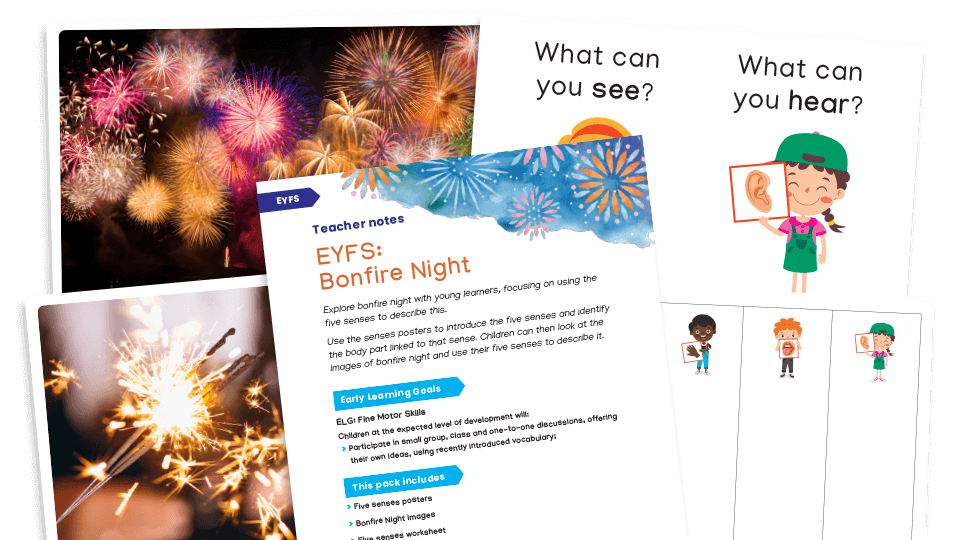
It includes posters, images, a worksheet and teacher guidance to encourage children to describe Bonfire Night experiences, building their oracy and confidence in speaking.
Meanwhile, this EYFS resource pack helps young learners develop fine motor skills through engaging fireworks-themed activities. It includes worksheets, rocket templates and word cards to trace patterns, explore firework sounds and inspire art. There's teacher guidance for both continuous provision and adult-led activities.
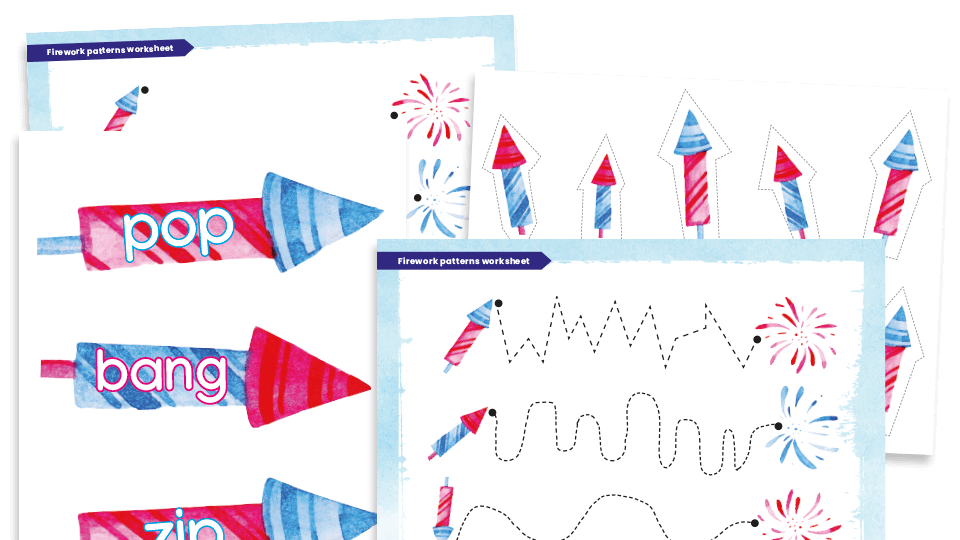
KS1 activities
For younger primary pupils, Bonfire Night is an opportunity to explore sound words, storytelling and simple poetry.
Encourage pupils to explore the sounds of fireworks through onomatopoeia and poetry. Using a model poem and image and word cards, children can practise phonics and reading and spelling words. They'll then create their own firework-inspired poems.

Introduce KS1 pupils to Guy Fawkes and the Gunpowder Plot with this simple Bonfire Night resource. Using a PowerPoint and recount worksheet, children can develop their understanding of history and their skills in writing about real events.
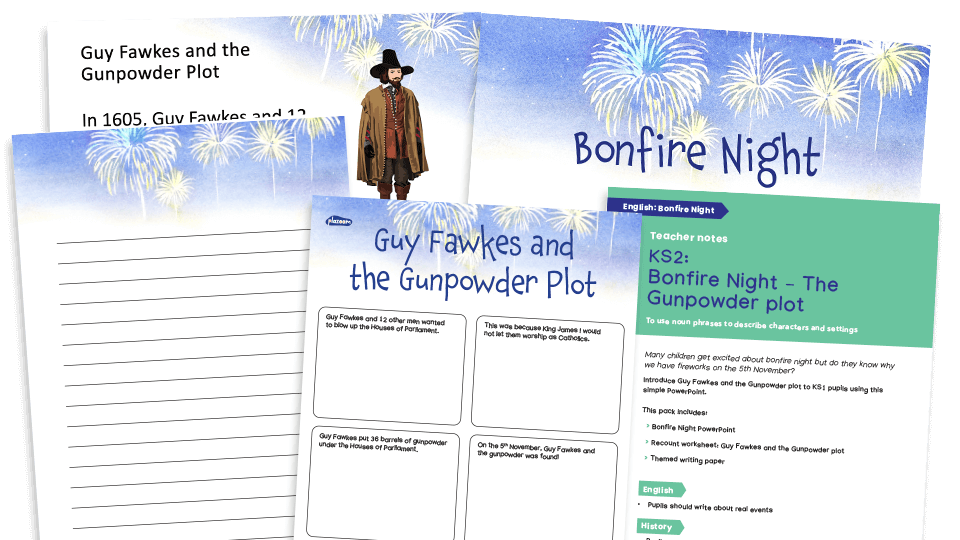
Alternatively, help children explore the sights and sounds of Bonfire Night through acrostic poetry. Using a model poem and idea sheets, pupils can gather ideas and create their own firework- and bonfire-themed acrostic poems.

Sticking with the poetry theme, this two-week unit supports Year 1 pupils in writing descriptive firework poems based on an original model text by professional author Joshua Seigal.
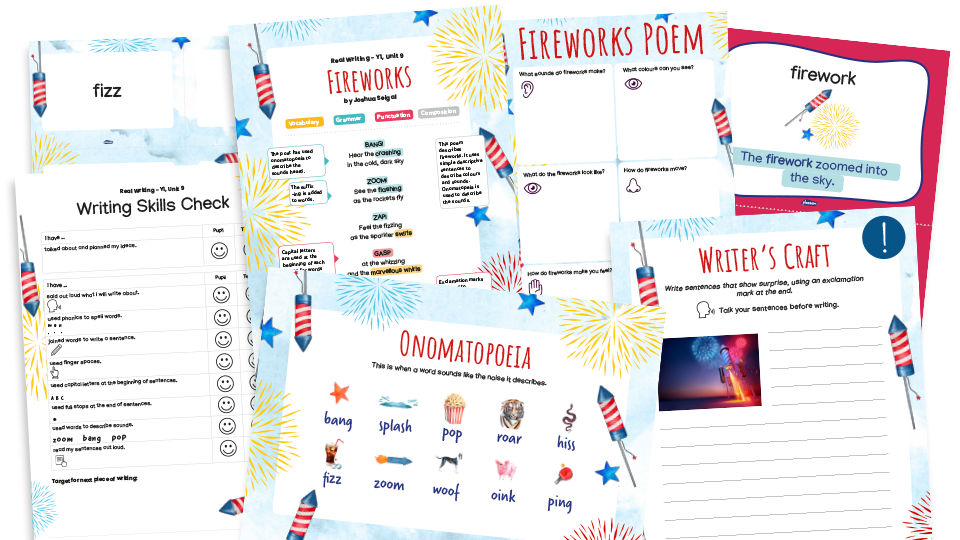
KS2 activities
Older pupils can develop their writing through imaginative language, extended description and more detailed historical study. The themes of secrecy, danger and spectacle within the Gunpowder Plot provide fertile ground for creative and analytical tasks.
Support KS2 pupils in creating vivid Bonfire Night setting descriptions using figurative language. With a model text, image and vocabulary cards, posters and worksheets, children can collect ideas and craft their own descriptive writing, practising similes, metaphors and other figurative techniques.

Help KS2 pupils understand the history behind Bonfire Night with a non-chronological report on the Gunpowder Plot. The resource includes comprehension questions and themed writing activities, allowing children to develop reading skills and write in role as Guy Fawkes or his accomplices.
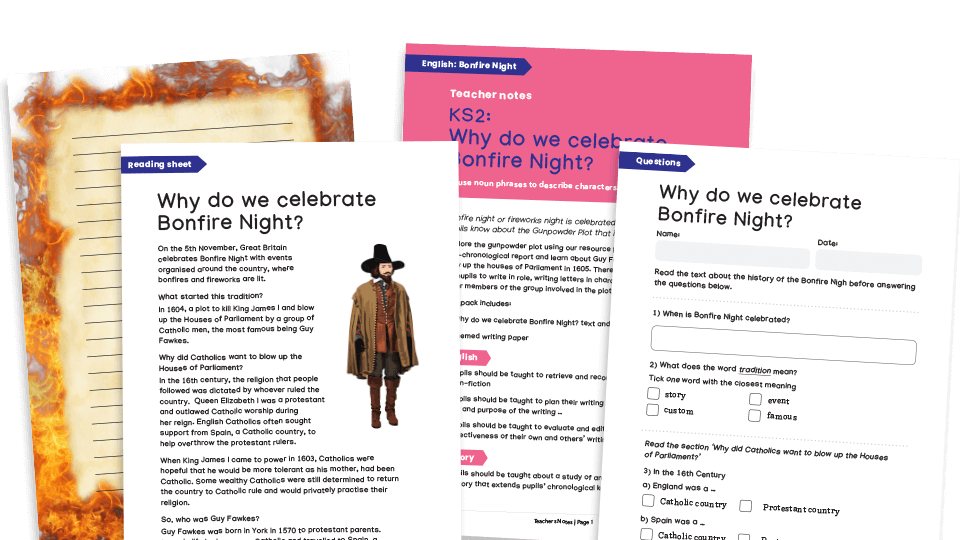
Meanwhile, encourage pupils to think critically about fireworks and their impact on pets with this First News resource pack. It includes discussion prompts, writing activities and research tasks that will help children reflect on real-world issues.
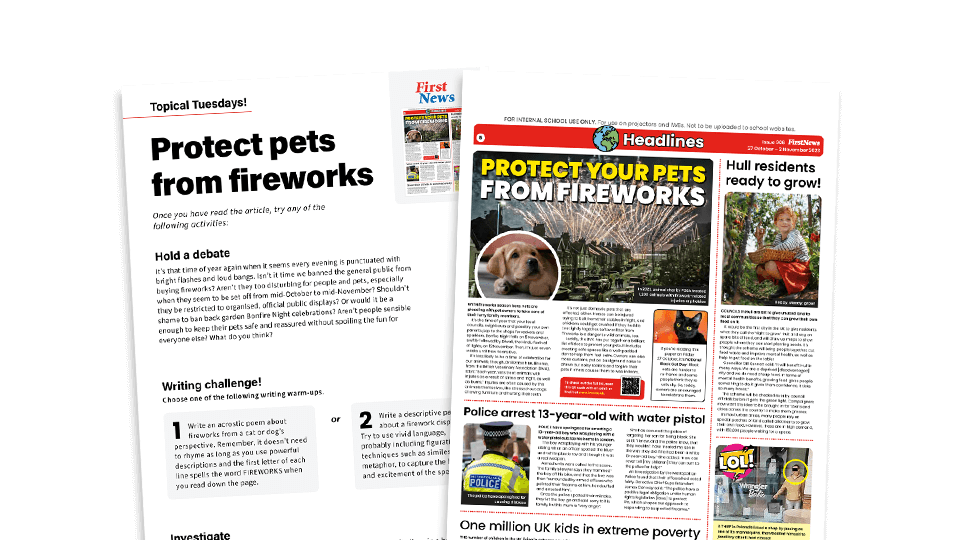
Finally, bring Bonfire Night into the science classroom with hands-on STEM activities from Teachwire that explore density, forces, thrust and gravity. Pupils can create “fireworks in a jar” to see how liquids of different densities interact and investigate how forces affect motion.